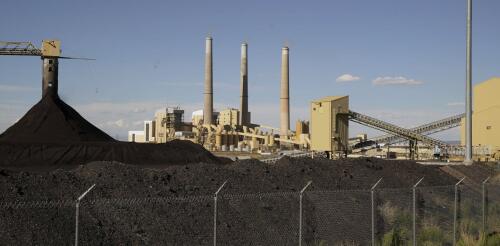Carbon capture and sequestration
Electric power generation in the U.S. is shifting rapidly away from fossil fuels toward cleaner and lower-carbon sources. State clean energy targets and dramatic declines in the cost of renewable electricity are the most important reasons. But fossil fuel plants still generate 60% of the U.S. electricity supply, producing air, water and land pollutants and greenhouse gases in the process. To reduce these impacts, the Environmental Protection Agency announced a suite of rules on April 25, 2024. They focus mainly on coal plants, the nation’s most-polluting electricity source. As an environmental lawyer who has been in practice since the early 1970s, I believe these curbs on power plant pollution are long overdue. The new rules close loopholes in existing laws that have allowed coal-fired power plants to pollute the nation’s air and water for decades. And they require utilities to drastically slash these plants’ greenhouse gas emissions or close them down. Oppon...
The U.S. government is planning to crack down on power plants’ greenhouse gas emissions, and, as a result, a lot of money is about to pour into technology that can capture carbon dioxide from smokestacks and lock it away. That raises an important question: Once carbon dioxide is captured and stored, how do we ensure it stays put? Power plants that burn fossil fuels, such as coal and natural gas, release a lot of carbon dioxide. As that CO₂ accumulates in the atmosphere, it traps heat near the Earth’s surface, driving global warming. But if CO₂ emissions can be captured instead and locked away for thousands of years, existing fossil fuel power plants could meet the proposed new federal standards and reduce their impact on climate change. We work on carbon capture and storage technologies and policies as a scientist and an engineer. One of us, Klaus Lackner, proposed a tenet more than two decades ago that is echoed in the proposed standards: For all car...
The Biden administration proposed new power plant rules on May 11, 2023, that have the potential to be among the most stringent federal policy measures on coal, oil and gas power plants the United States has ever introduced. The proposal would set new carbon pollution standards for existing power plants, effectively restricting their emissions of carbon dioxide, a greenhouse gas that contributes to climate change. Operators of fossil fuel power plants would need to find feasible and innovative ways to avoid excessive carbon dioxide releases. That’s drawing attention to a relatively mature, but expensive technology: carbon capture and storage, or CCS. Most CCS chemically separates carbon dioxide generated during fossil fuel combustion, compresses it and transports it through pipelines for storage, typically in geological formations deep underground. While CCS can be effective, it has some high hurdles on its path to widespread use. I follow U.S. policies on CCS as a clim...
Forests are critically important for slowing climate change. They remove huge quantities of carbon dioxide from the atmosphere – 30% of all fossil fuel emissions annually – and store carbon in trees and soils. Old and mature forests are especially important: They handle droughts, storms and wildfires better than young trees, and they store more carbon. In a 2022 executive order, President Joe Biden called for conserving mature and old-growth forests on federal lands. Recently Biden protected nearly half of the Tongass National Forest in Alaska from road-building and logging. The Biden administration is compiling an inventory of mature and old-growth forests on public lands that will support further conservation actions. But at the same time, federal agencies are initiating and implementing numerous logging projects in mature and old forests without accounting for how these projects will affect climate change or forest species. As scientists who have spent decades...
Deep below the ocean surface, the light fades into a twilight zone where whales and fish migrate and dead algae and zooplankton rain down from above. This is the heart of the ocean’s carbon pump, part of the natural ocean processes that capture about a third of all human-produced carbon dioxide and sink it into the deep sea, where it remains for hundreds of years. There may be ways to enhance these processes so the ocean pulls more carbon out of the atmosphere to help slow climate change. Yet little is known about the consequences. Peter de Menocal, a marine paleoclimatologist and director of Woods Hole Oceanographic Institution, discussed ocean carbon dioxide removal at a recent TEDxBoston: Planetary Stewardship event. In this interview, he dives deeper into the risks and benefits of human intervention and describes an ambitious plan to build a vast monitoring network of autonomous sensors in the ocean to help humanity understand the impact. First, what is ocean carbon...




